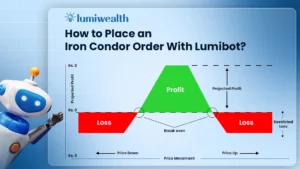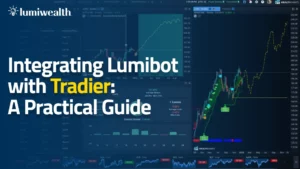Are you an investor or trader looking to maximize your profits? If so, you’ve likely heard of algorithmic trading. Algorithmic trading is a process of using computers to automate trading decisions. By using algorithms, investors and traders can quickly analyze market data and make decisions in a fraction of the time it would take a human trader. In this article, we’ll explore the world of algorithmic trading and how you can use it to make maximum profit.
What is Algorithmic Trading?
Algorithmic trading is a form of trading that uses computer algorithms to determine trades automatically. It works by analyzing market data, such as stocks, currencies, and commodities, and making decisions based on pre-defined parameters. Algorithmic trading can be used by both institutional investors and retail traders to buy and sell securities.
Algorithmic trading is one of the most popular forms of trading because it is fast, efficient, and reliable. With algorithmic trading, traders can quickly analyze market data and make decisions within seconds. This is possible because algorithms can analyze large amounts of data at once and make decisions faster than a human can.
The most popular form of algorithmic trading is high-frequency trading. High-frequency trading involves buying and selling securities in rapid succession, often within milliseconds. High-frequency trading is used by large institutional investors, such as hedge funds and investment banks, to take advantage of small price movements in the markets.
Benefits of Algorithmic Trading
Algorithmic trading offers several benefits for investors and traders. First, algorithms can quickly analyze large amounts of data and make decisions faster than a human trader. This can help traders and investors make decisions quickly and accurately.
Second, algorithms can be programmed to take into account a variety of factors when making trading decisions. This includes factors such as market trends, economic indicators, and news reports. Algorithms can also be programmed to take into account a trader’s risk tolerance, allowing them to make decisions based on their individual risk profile.
Finally, algorithmic trading can reduce the emotional bias that can often cloud a trader’s judgment. By taking the emotion out of trading decisions, traders can make decisions based on facts, not feelings.
Algorithmic Trading Strategies
Algorithmic trading strategies can vary greatly depending on the type of trading being done. For example, a trader may use a momentum trading strategy, which involves buying and selling stocks based on the strength of their recent performance. Alternatively, a trader may use a mean reversion strategy, which involves buying and selling stocks when they are trading at extreme highs or lows.
Traders can also use trend-following strategies, which involve buying and selling stocks based on the direction of the overall market. Finally, traders can use arbitrage strategies, which involve taking advantage of price discrepancies in different markets.
How to Choose the Right Algorithmic Trading Software
Once a trader has determined which algorithmic trading strategies they want to use, they need to choose the right software. There are many different types of algorithmic trading software available, so it can be difficult to know which one to choose.
When choosing an algorithmic trading software, traders should consider the features, such as automated order entry, backtesting, and real-time data analysis. The software should also be able to integrate with other trading platforms, such as Robinhood and TD Ameritrade. Finally, traders should consider the cost of the software, as some software can be quite expensive.
Algorithmic Trading Strategies with AI, Python, and Other Software
Algorithmic trading strategies can be further enhanced with the use of artificial intelligence (AI) and advanced programming languages, such as Python. AI can be used to identify patterns in the markets and make decisions based on those patterns. Python can be used to develop custom algorithms and automated trading strategies.
AI and Python can also be used to develop automated trading bots, which can be programmed to make trades based on pre-defined parameters. These bots can be used to trade a variety of markets, including stocks, crypto, options, futures, and forex.
Algorithmic Trading Strategies for Stocks, Crypto, Options, Futures, and Forex
Algorithmic trading strategies can be used to trade a variety of markets, including stocks, crypto, options, futures, and forex. Each market requires a different approach, so traders should do their research to determine which strategies are best suited for their needs.
For example, stocks are typically traded using strategies such as momentum and mean reversion. Crypto is typically traded using strategies such as trend-following and arbitrage. Options, futures, and forex are typically traded using strategies such as trend-following and mean reversion.
Algorithmic Trading Strategies for Quant Trading
Quant trading is a form of algorithmic trading that uses quantitative analysis to make decisions. This type of trading involves analyzing large amounts of data, such as market trends, economic indicators, and news reports, to identify patterns in the markets.
Quant trading strategies can be used to trade a variety of markets, including stocks, crypto, options, futures, and forex. Traders can use quant trading strategies to identify opportunities in the markets and make profitable trades.
Tips for Making the Most Profit with Algorithmic Trading
Algorithmic trading can be a lucrative way to make money, but it is important to understand the risks and rewards associated with it. Here are some tips for making the most profit with algorithmic trading:
- Research the markets you plan to trade. It is important to have an understanding of the markets and how they work before you start trading.
- Develop a trading plan. A trading plan should include your investment goals, risk tolerance, and strategies for entering and exiting trades.
- Test your strategies. It is important to test your strategies before trading with real money.
- Use risk management tools. Risk management tools can help you minimize risk and maximize profits.
- Take profits when they come. It is important to take profits when they come, as markets can be unpredictable.
Courses for Algorithmic Trading
If you are interested in learning more about algorithmic trading, there are several courses available. These courses can help you understand the basics of algorithmic trading and how to develop strategies that can be used to make money in the markets.
Sign up for one of our free classes today and start learning how to create your own profitable trading robots!
Conclusion
Algorithmic trading is a powerful tool for investors and traders. By using algorithms, traders can quickly analyze market data and make decisions within seconds. Algorithmic trading can be used to trade a variety of markets, including stocks, crypto, options, futures, and forex.
In order to make the most profit with algorithmic trading, it is important to understand the markets, develop a trading plan, test your strategies, and use risk management tools. Additionally, it is important to take profits when they come as markets can be unpredictable.
If you are interested in learning more about algorithmic trading, there are several courses available.




